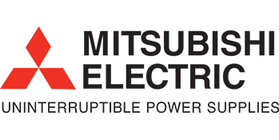Generator and ATS Switches

For temporary or trailer mounted generators, hookups can be faster and safer using a “tie-in panel” installed near the building switchgear that contains connectors such as camlocks. The tie in panel may also contain a phase rotation indicator (for 3 phase systems) and a circuit breaker.
Standby power generators are permanently installed and kept ready to supply power to critical loads during temporary interruptions of the utility power supply. Hospitals, communications service installations, data processing centers, and many other important facilities are equipped with standby power generators. Generators, through the use of an Automatic Transfer Switch (ATS), can automatically detect the loss of utility power, start the motor, run supporting the load, detect when grid power is restored, and then turn itself off—with no human interaction.
Guardian Power provides generator design, engineering, and full after sales support for a wide range of power generation applications. We offer onsite electrical audits to assist in determining the correct product and installation to meet your exact needs and requirements.
Generator and ATS Switches
An engine-generator is the combination of an electrical generator and an engine (prime mover) mounted together to form a single piece of equipment. This combination is also called an “engine-generator set” or a “gen-set.” In many contexts, the engine is taken for granted and the combined unit is simply called a generator.
Engine-generators are available in a wide range of power ratings. These include small, hand-portable units that can supply several hundred watts of power, hand-cart mounted units, that can supply several thousand watts and stationary or trailer-mounted units that can supply over a million watts. Regardless of the size, generators may run on gasoline, diesel, natural gas, propane, bio-diesel, water, sewage gas or hydrogen.
Engine-generators are used to supply electrical power in places where utility power is not available, or where power is needed only temporarily. They are also used for emergencies or backup where either a redundant system is required or no generator is on site.

Let The Number Speak
Why Choose Us
GUARDIAN POWER VENDORS


